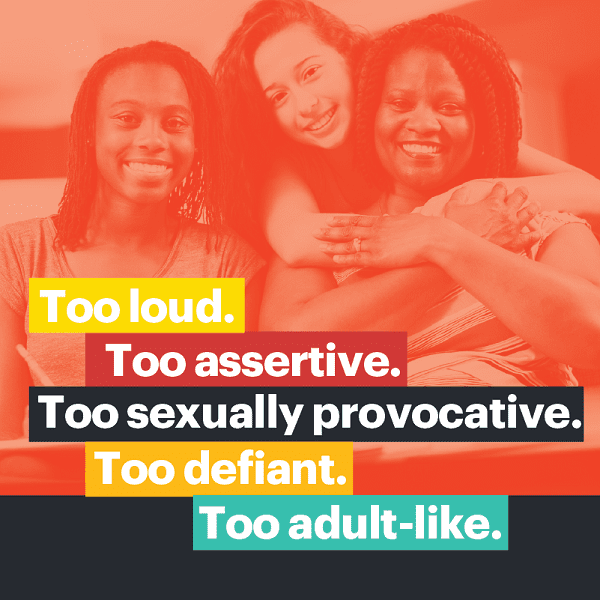“And they cared”: How to Create Better, Safer Learning Environments for Girls of Color
All across the country, girls of color are excluded from school for subjective offenses like these, missing out on…

All across the country, girls of color are excluded from school for subjective offenses like these, missing out on critical class time and opportunities to learn. Black girls face some of the greatest barriers to educational opportunities because of racial and gender biases embedded within school discipline policies, dress codes, and codes of conduct that target their cultural identity.These biases manifest as punishments that have more to do with who these girls are rather than what they do. During the current uncertainty of a global pandemic and the beginning of a historic public reckoning on racism in the United States, school districts are at a turning point in which they must make intentional and specific policy and financial decisions to address the legacy of 400 years of systemic anti-Blackness that is folded in our nation’s fabric.To help districts and schools do this critical work, The Education Trust partnered with the National Women’s Law Center to develop a new guide to respond to this moment and provide decision-makers with a common language and practices that can be used to reform exclusionary discipline policies and improve school climate to help address the needs of girls of color.
Educators should “not act on impulse but actually figure out exactly what’s going on before making a decision. Talk to the students and see where their head is at instead of going right to punishment.”
– Student, McClymonds High School, Oakland
“They always made sure we [were] fine when we left the room. They didn’t just say ‘oh, it’s just a misunderstanding’ and send us [away].”
– Student, Oakland Emiliano Zapata Street Academy
Restorative justice offers a less punitive, more positive alternative to addressing school-based conflicts and violence than the more traditionally used punitive method or zero-tolerance policies. When done well, restorative justice uses evidence-based practices such as talking circles, also known as restorative circles or peace circles, which allow for all parties to talk about what happened, how they are feeling about it, and the impact it had on everyone involved.
Racial disparities in school discipline aren’t inevitable. By using the checklist provided in this guide, policymakers, advocates, and school leaders can work together to address these disparities. This checklist should be used to assess existing systems and make changes to build a positive school climate — one where students can feel safe; have a supportive academic and physical environment; experience positive social and emotional growth; and have respectful, trusting, and caring relationships.